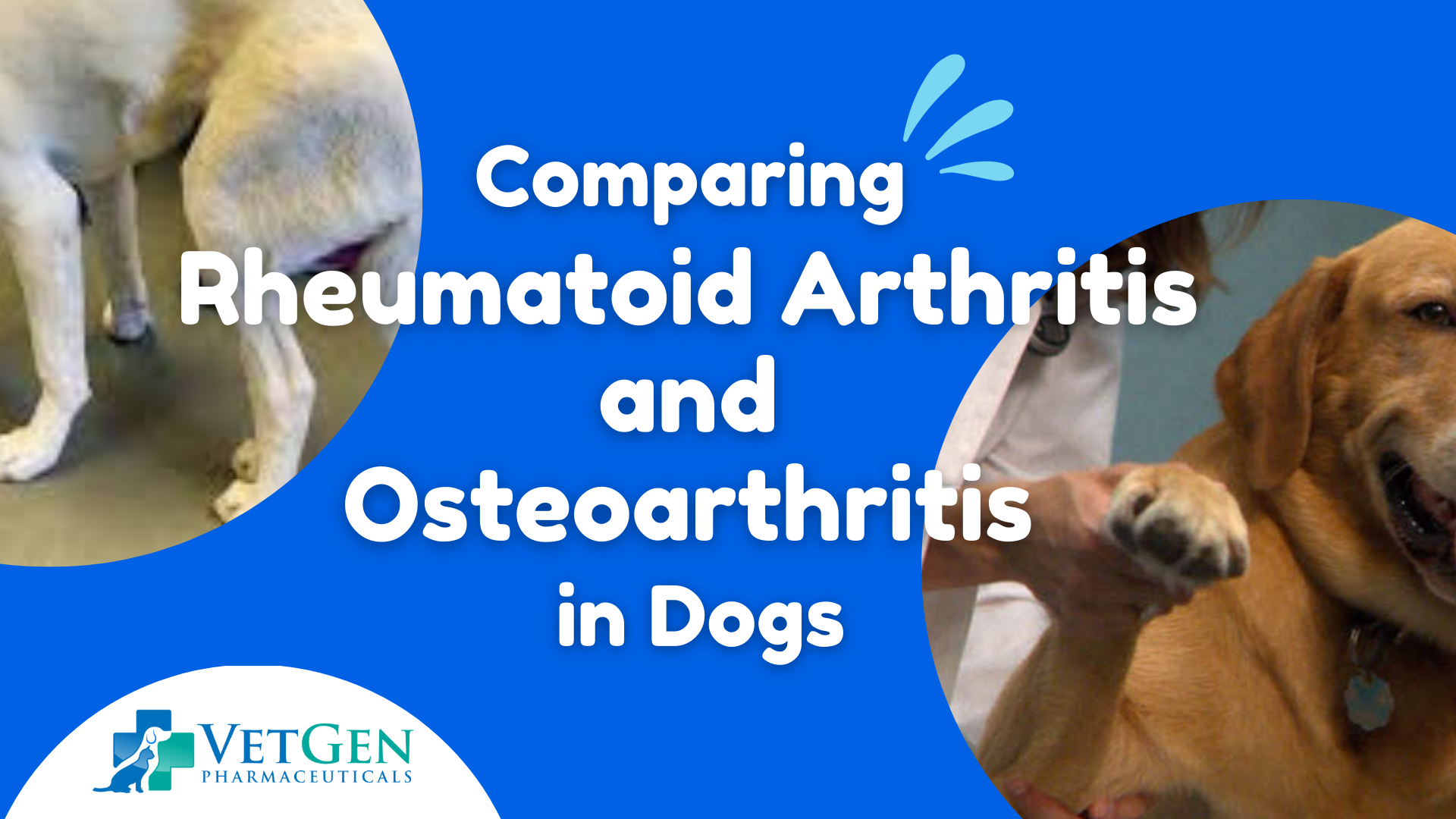Arthritis is a common disease that affects canines due to lots of factors. Some causes of this chronic condition are old age, body size, infection, and injury. A healthy dog’s joint is covered by cartilage which provides cushioning between two joined bones. However, dogs can lose or damage this cartilage as they grow old or due to injury. Once this happens it can lead to inflammation and then arthritis.
Two kinds of arthritis affect dogs and they are osteoarthritis and rheumatoid arthritis. Osteoarthritis is the most common type and can occur due to ligament or joint injury. Rheumatoid on the other hand occurs due to immune issues. Osteoarthritis and rheumatoid arthritis in dogs are something every pet parent needs to be aware of.
This post will dive into these two types of dogs arthritis and explain their causes and symptoms.
What is Rheumatoid Arthritis in Dogs?
Rheumatoid arthritis is an autoimmune condition that affects the joints and feet of dogs. This condition is relatively rare in dogs and can damage the cartilage. It usually occurs when the body starts attacking its proteins because it sees them as foreign. There is no known cause for this disease.
This arthritis mainly affects the carpal and tarsal (foot) joints of small dog breeds. The dogs affected by rheumatoid are usually between one to eight years old. Although the most common symptom of this condition is lameness, it also comes with other symptoms. Once you suspect your pup might be suffering from rheumatoid, it is important to get them help as soon as possible. Rheumatoid is painful and can lead to permanent damage when left untreated for a long time.
Symptoms of Rheumatoid Arthritis
The two types of rheumatoid arthritis are Idiopathic and Erosive. Erosive is usually common in greyhounds and can affect them as early as 3 months of age. Idiopathic is common with small breeds and affects them between 2 to 4 years of age.
Some of the symptoms of Rheumatoid arthritis are:
- Restricted mobility
- Lameness
- Joint swelling or multiple joint pains
- Pneumonia
- Limb atrophy
- Fever
- Loss of appetite
- Kidney disease
- Loss of muscle mas
Treatment of Rheumatoid Arthritis
Rheumatoid arthritis is not easy to diagnose in dogs because it is a rare condition. If you suspect your dog might be suffering from this condition, then you need to take them to a veterinarian. The damage in the joints is usually diagnosed effectively with radiology.
After diagnosis, the next step will be treatment since it has no cure. However, it has lots of treatments which include steroids, anti-inflammatory, or immunosuppressive medications. The main goal of the treatment will be to reduce symptoms and provide comfort from the pain your dog is experiencing.
What is Osteoarthritis in Dogs?
Osteoarthritis is a common type of arthritis that affects all breeds of dogs. It is a loss of bone and cartilage which usually leaves the joints misshaped. This condition is progressive and if untreated can cause irreversible damage in canines. Large breeds of dogs are at greater risk than smaller breeds.
This condition occurs due to damage to the joint cartilage. It is chronic and can cause extreme pain for dogs. Some of its risk factors are old age, injury, and body size.
Symptoms of Osteoarthritis
As a pet parent, you can hardly miss it if your dog is suffering from osteoarthritis. Below are some of its symptoms:
- Stiffness or difficulty getting up
- Loss of joint flexibility
- Tender joint
- Soft tissue inflammation that causes swelling
- Fatigue
- Inactiveness
- Weight gain
- Reluctance to run and play
Treatment of Osteoarthritis
If your pup is showing one or two signs of osteoarthritis, it is recommended to take them to a vet for an evaluation. This is to avoid causing damage that will affect the quality of life of your dog. Once taken in for evaluation, they will be subjected to a range of physical examinations. After this, a diagnosis is next.
If your dog has been diagnosed with this disease, the next step will be treatment. There is no cure for this disease but it can be managed. Osteoarthritis can be treated using a healthy diet, joint supplements, and exercise.
The main goal of the treatment of osteoarthritis is to manage the symptoms, pain, and decrease inflammation.
Conclusion
Osteoarthritis and rheumatoid arthritis are conditions that affect the joint cartilage of dogs. If you notice your dog is suffering from either of these diseases due to the symptoms mentioned in this post, you should take them to a doctor. They will be given treatments that can help them deal with the pain and discomfort that comes with it.
Frequently Asked Questions
How long can a dog live with osteoarthritis or rheumatoid Arthritis?
Dogs with arthritis can live normally as long as the condition is managed. They can have a normal life expectancy.
How can you tell the difference between RA and osteoarthritis?
The major difference between these two conditions is their causes. Rheumatoid is an autoimmune condition that occurs when the body’s immune system attacks the joints of the body. Osteoarthritis on the other hand is caused by damage to the joints.
What are the risk factors of Arthritis?
There are so many risk factors that can increase the chance of arthritis in your dogs. Some of them are genetics, old age, obesity, diet, and injury.
What makes osteoarthritis worse?
If the condition is left untreated, it can worsen and lead to generative disease. This is why you need to seek treatment once you start noticing symptoms in your dog.
Can I use joint supplements to treat arthritis for my dog?
Yes, there are lots of osteoarthritis and rheumatoid arthritis dog supplements that can help your dog deal with the symptoms and pains that come from arthritis. It is also advisable to reach out to a vet once you start noticing the symptoms.
How do you diagnose rheumatoid arthritis in dogs?
This condition can be diagnosed through a medical exam and analysis of the joint.
Does osteoarthritis hurt all the time?
Yes, this condition is painful and can cause inflammation. However, pain relief can help alleviate the symptoms.






